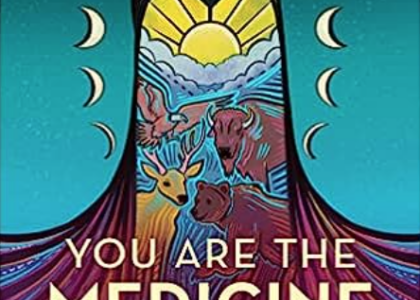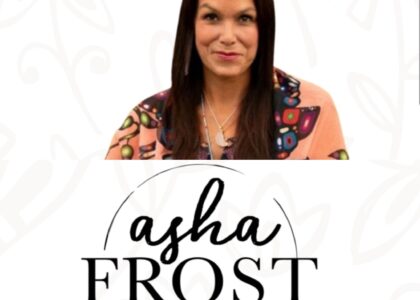Saturday, November 6, 2021
Welcome to my Health Saturday’s B.R.E.A.T.H.S. blog. This space I have opened to discuss my lifelong battle with the genetic connective tissue disorder, Ehlers-Danlos Syndrome (EDS), type-3: hypermobility (HEDS). I started this health blog in May 2021 and described my lifelong difficulties with frequent falling, breaking bones, bruising easily, temperature control issues, subluxing/dislocating, and mental health issues associated with hEDS. There is no known cure for EDS, only ways to manage it, and depending on the type, it is most likely not going to be life-threatening.
My EDS Journey
During the month of November on my Health Saturday’s blog, I will be detailing my journey with EDS to help bring attention to a pretty common condition that is rarely diagnosed. This week, I will discuss how I came to find out about EDS. Next week, I will detail life with EDS as a child. The third week, I will get deeper into the discussion about how I am dealing with EDS as an adult. The final week, I will be providing research on what to expect dealing with EDS in my later years.
EDS is My Superpower!
While many people would consider a genetic disability, well, just that, a dis-ability, I actually believe EDS gives me special powers and more abilities than if I didn’t have it. Powers such as: insatiable curiosity, hyper-flexibility (physical, mental, time), and keen knowledge. If I wasn’t born with EDS, I figure I would not have all of those powers, but because I do, I am stronger and wiser for it, therefore, EDS is my superpower.
How Did I Find Out About EDS?
Not all superheroes know about their superpowers right away, they have several phases in life where they slowly grow into their powers until it is finally evident to them there is something special. While I had ALL the evidence in my youth (next week’s story), I did not find out about EDS until I was 39 years old (third week’s story). This week, I will explain the day I knew what my superpower (EDS) was.
Winter Break 2016
My best friend and I met up for drinks in Long Beach, CA, on December 18, 2016, a month after my 39th birthday. She had just finished up a semester of doctoral school at Penn State University, and was telling me about her experiences with the colder weather in Pennsylvania compared to the relatively moderate year-round temperatures in California. Her doctors helped her with some health issues associated with colder climates and how they affect disabilities. Her story started to sound like the reason I moved from the gloomy Pacific Northwest to sunny Southern California.
She went on to explain that her doctors wanted to test her for EDS, a condition that can be affected by colder climates. Her doctors explained the symptoms and she immediately reflected on my past health traumas and couldn’t wait to tell me what she learned. While neither of us had heard of EDS, we both looked up the symptoms (The Ehlers-Danlos Society, 2021) and found the associated symptoms that matched my health history perfectly:
My Joint Problems
- Joint pain
- Muscle pain, tension, weakness
- Nerve pain and disorders
- Loose/unstable joints prone to frequent injury
- Pelvic floor weakness (causing two miscarriages)
My Skin Problems
- Softy, stretchy, velvety
- Fragile, easily tears or bruises
- Scars easily and scars tend to stretch over time
- Slow wound healing
My Less Common Problems
- Scoliosis (upper and lower part of my spine)
- Lumbar Lordosis
- Dislocations (knees most frequently, ankles, elbows, shoulders, hips)
- Poor muscle tone
- Gum disease
My Co-morbidities (especially with hypermobile EDS, hEDS)
- Overactive bladder and bowels
- Acid reflux
- Bloating
- Food intolerances
- Sensitive to smells that cause nausea
- Temperature regulation (always cold or easily sweats)
- Mental health disorders such as anxiety, depression, and phobias (fear of falling)
Monday morning, December 19, I called my primary care physician and set up an appointment that week for Friday, December 23, 2016. I had four days to prepare my health case for my doctor, so I did research at the university library to look through peer reviewed journals to get more background information on EDS. I knew the symptoms list was compelling, but I wanted to find out what medical doctors I would need to see, what type of therapy I would need, and what my health journey was going to look like going forward with this new and life-changing information.
Conclusion on Finding My Superpower, EDS
For the first time in my life, all my past health traumas made sense. The moment I found the name of the dis-ability, I found extra capabilities. I was empowered with the knowledge to take control over my health, and I have been on a mission to find ways to preserve it so that I can live longer, happier, and healthier for the remainder of my years here.
Sending lots of love and healing energy,
Dr. Jaime Brainerd, Ed.D.
The Ehlers-Danlos Society. (2021). What is EDS. Retrieved from https://www.ehlers-danlos.com/what-is-eds/
*Disclaimer: I am not a medical professional and I am not giving any medical advice. My doctorate is in educational leadership and technology. I am a health enthusiast who feels that sharing health-related information I learn about myself might help others heal themselves as my mentors, teachers, practitioners, and favorite authors have taught me. If you have serious health conditions, please consult your primary care physician immediately.







This is very interesting.